Sprudelhof, Bad Nauheim
The Sprudeholf or “effervescent” bath is a type of spa bath through which carbon dioxide is bubbled and was one of several types of hydrotherap. The ensemble is an impressive cultural monument and was built between 1905 and 1911. It is a clearly structured and symmetric facility as a whole, as playful and loving is the design of the great little details. The mineral springs in the centre of the “Sprudelhof” are surrounded by six bath houses and each has an aesthetic waiting hall and an enchanting ornamental courtyard with a fountain.
Gernsheim
Gernsheim is a town in Groß-Gerau district (Hesse) and is lying on the Rhine. The town is the birthplace of Peter Schöffer (Petrus Schoeffer) an early German printer, who studied in Paris and worked as a manuscript copyist in 1451 before apprenticing with Johannes Gutenberg.
Important for the town is the container port with a railway connection. There are also ferries across the Rhine to Eich in Rhineland-Palatinate.
Potsdam – Glienicke Bridge (Glienicker Brücke)
The Glienicker Bridge is situated on the edge of Berlin. It spans the river “Havel” to connect the cities of Potsdam and Berlin. During the Cold War, the Glienicker Bridge was one of the few places in the world where the Soviet Union and the Western powers stood directly opposite each other. The bridge lies at an isolated point where US-occupied West-Berlin met the Soviet-occupied Potsdam (East Germany).
The Glienicke Palace (Schloss Glienicke) was designed by Karl Friedrich Schinkel for Prince Carl of Prussia in 1826. The two golden lions in the front of the building are versions of the Medici lions from the Villa Medici. The palace and park are UNESCO World Heritage sites as part of the Palaces and Parks of Potsdam and Berlin since 1990.
Potsdam – New Palace (Neues Palais)
The New Palace is situated on the western side of the Sanssouci royal park in Potsdam was build by Frederick the Great. The construction of the palace started 1763 and was finished after six years, 1769. It is considered to be the last great Prussian baroque palace.
Potsdam – Orangery Palace
The Orangery Palace (Orangerieschloss) is also known as the New Orangery on the Klausberg, or just the Orangery. It was built in the style of the Italian Renaissance, after the image of the Villa Medici in Rome and the Uffizi in Florence.
Potsdam – Park Sanssouci
Sanssouci Park is a large park surrounding Sanssouci Palace in Potsdam, Germany. Following the terracing of the vineyard and the completion of the palace, the surrounding is a baroque flower garden with lawns, flower beds, hedges and trees. The greenhouses of the numerous nurseries contained oranges, melons, peaches and bananas.
The park has a 2.5 km long straight main avenue and begins in the east at the 1748 obelisk and over the years was extended all the way to the New Palace, which marks its end in the west.
Potsdam – Church of Peace (Friedenskirche)
The Friedenskirch (Church of Peace) is a protestant church and is situated in the palace grounds of Sanssouci Park in Potsdam, Germany. The cornerstone of the churchhouse was laid on April 14, 1845 and the structure resembles a High Italian monastery. A narthex across the western side of the portal opens into an inner courtyard (atrium), in the middle of the courtyard the larger-than-life statue of Christ on the fountain is a copy of the marble original and an arcade surrounds the inner courtyard. Parallel to the southern arcade runs the cloister with the Heilsbronn Porch, an entrance to the Marly Gardens. The Heilsbronn Porch is a replica of a Roman tiered porch at the former refectory in the Heilsbronn Cloister in Middle Franconia.
Darmstadt – Mathildenhöhe
These photos were taken after a sunny autumn day in Darmstadt (Hesse), Germany.
The artists’ colony “Mathildenhöhe” was founded in 1899 by Ernest Ludwig, Grand Duke of Hesse and the first exhibition of the artists’ colony took place in 1901. Ernest Ludwig motto was: “My Hesse should flourish, and the art in Hesse too” and he brought together several artists of the Art Nouveau (Jugendstil) in Darmstadt: Peter Behrens, Hans Christiansen, Ludwig Habich and Joseph Maria Olbrich.
